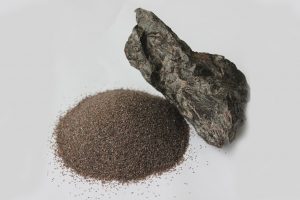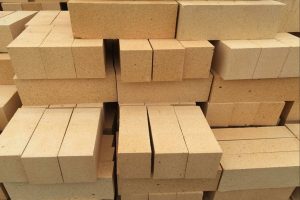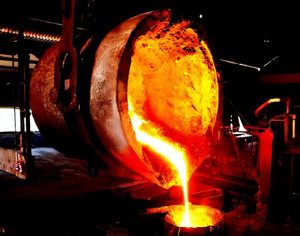Home / News & Blog / Abrasive Blog / How Brown Fused Alumina Boosts Refractories and Ceramics: Key Uses and Benefits
Brown fused alumina (BFA) is a must-have material in the world of refractories and ceramics. Known for its high hardness, thermal stability, and chemical corrosion resistance, BFA outperforms many other materials in extreme environments. Whether it’s withstanding high temperatures or dealing with harsh conditions, BFA is the go-to solution for many industrial needs. In this article, we’ll take a closer look at how BFA is used in refractories and ceramics and why it’s such a game-changer.
Brown Fused Alumina is made by fusing bauxite in an electric arc furnace. It has incredible durability and is known for its abrasion resistance, thermal shock resistance, and toughness. This makes BFA perfect for applications where materials need to perform under extreme conditions, like steelmaking, foundries, cement production, and even electronics manufacturing.



(1) High-Performance Refractory Bricks & Shapes
BFA is a key ingredient in alumina-based refractory bricks. These bricks, which are used in steel ladles, blast furnaces, and cement kilns, rely on BFA’s high Al₂O₃ content (95%+) for its wear resistance and thermal shock stability. In environments that see extreme temperatures and mechanical stress, BFA helps maintain integrity.
Pro Tip: Adding finer BFA grains to the mix can improve thermal shock resistance, helping prevent cracks and premature wear.
(2) Castables & Monolithic Refractories
In the production of low cement and ultra-low cement castables, BFA is essential for increasing volume stability and resisting slag penetration. These monolithic refractories are used in steelmaking, foundries, and incinerators. They offer excellent high-temperature performance and can withstand intense conditions without losing their shape or function.
Insider Tip: By adjusting the bulk density and grain distribution of BFA in castables, engineers can optimize the flowability and workability, achieving the perfect balance between strength and thermal performance.
(3) Refractory Coatings & Gunning Mixes
BFA is commonly used in protective coatings for furnace linings to reduce heat loss and protect against molten metal attacks. Spray coatings and gunning mixes with BFA are also used to quickly repair damaged refractory linings, extending their life and reducing downtime.
Industry Secret: Some advanced coatings blend fine and coarse BFA particles to create a self-healing surface that can better withstand thermal cycling over time.
(1) Wear-Resistant Ceramic Components
In advanced ceramics, BFA is used to produce wear-resistant components like grinding media, ceramic rollers, and nozzles. Thanks to its hardness (~9 on Mohs scale) and chemical inertness, BFA is perfect for high-performance ceramic parts that need to perform in aggressive or high-wear environments.
Pro Tip: Mixing fine-grain BFA with materials like zirconia or silicon carbide can boost the fracture toughness of ceramics, making them more durable in tough conditions.
(2) Kiln Furniture & Supports
BFA-based kiln furniture like saggers, setter plates, and crucibles is essential for high-temperature firing applications. These materials help maintain low thermal expansion, which prevents warping and cracking during repeated heating and cooling cycles in the kiln.
(3) Anti-Slip & Decorative Ceramic Surfaces
BFA is often mixed into ceramic tiles, sanitary ware, and floor coatings to improve abrasion resistance and add anti-slip properties. It’s also used in decorative glazes, where custom-sized BFA granules are used to balance both the aesthetic appeal and functional durability of ceramic products.
Pro Tip: Adjusting BFA particle size helps create the perfect texture and finish for both looks and performance.
High-density BFA is recommended for steelmaking refractories to improve durability.
Medium-purity BFA is suitable for ceramic tiles and general-purpose refractories.
Fine BFA powders enhance the mechanical properties of advanced ceramics and coatings.
Brown Fused Alumina is a key player in both refractory and ceramic industries. Its ability to handle high temperatures, abrasion, and thermal shock makes it essential for a wide range of demanding applications. Whether you’re in steelmaking, ceramic manufacturing, or any other industry that deals with high-stress environments, BFA can significantly improve performance and durability.
Looking for top-quality Brown Fused Alumina? Contact DOMILL today for expert advice and tailored solutions to meet your specific needs.